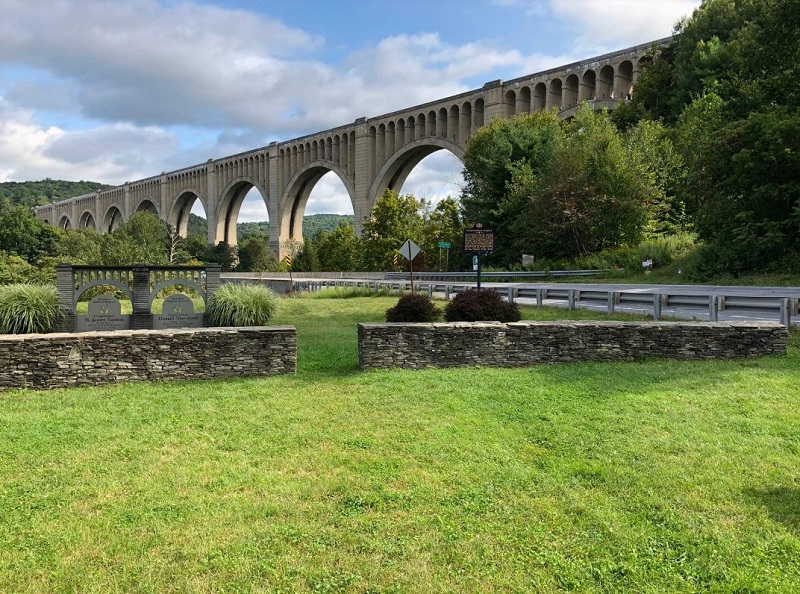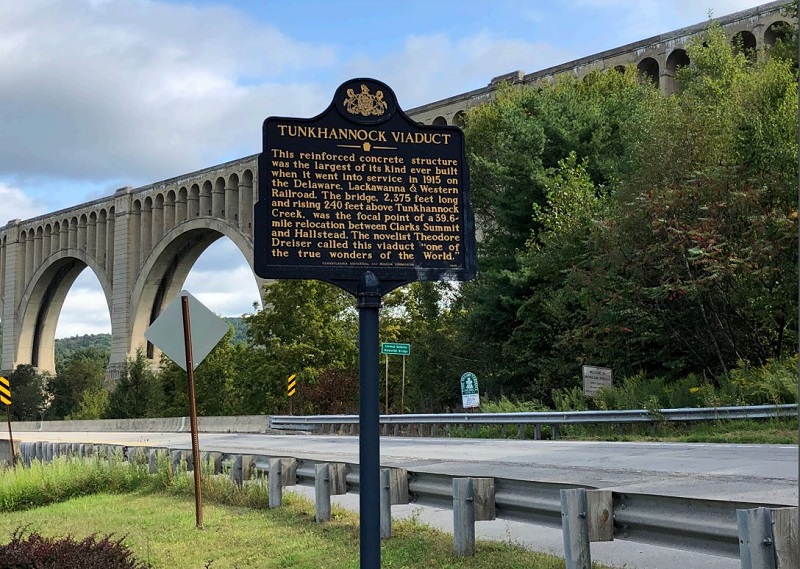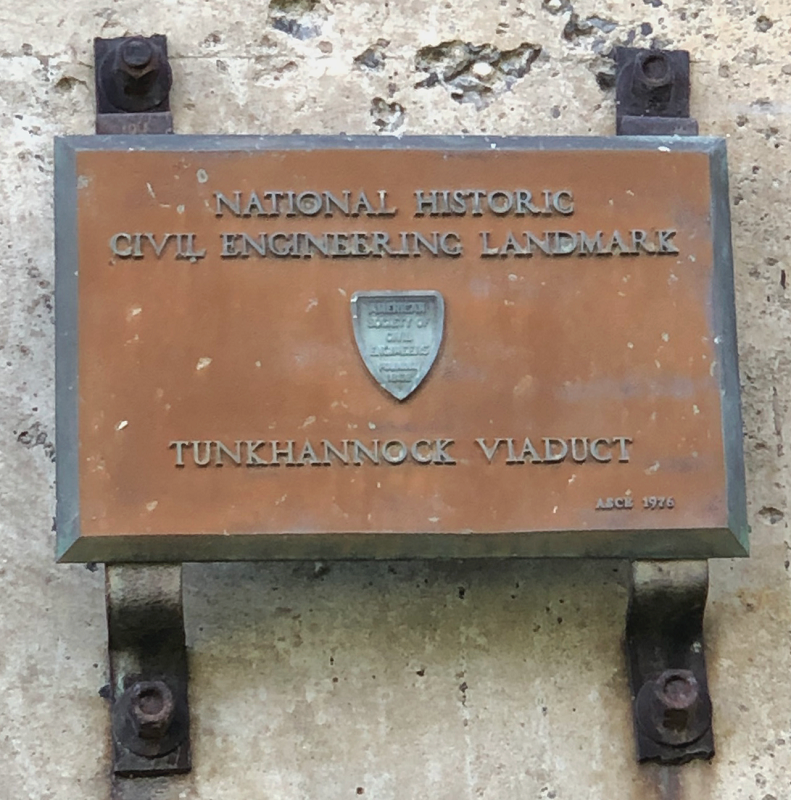Tunkhannock Viaduct
Completion Date
1915
Project Type
Bridges
Location
Nicholson, PA
41 37 34.2 N
75 46 34.4 W
41 37 34.2 N
75 46 34.4 W

When built, the Tunkhannock Viaduct, a reinforced concrete structure, was the largest of its kind.

Designed by A. Burton Cohen, the 2,375-foot-long concrete arched railroad bridge was, upon completion, the largest concrete bridge in the world. The double tracks of the new line traversed the valley 240 feet above the streambed. Today, freight trains still regularly use the Tunkhannock Viaduct.
Facts
- Giant wooden towers were built at the ends (each 169 feet tall) and at the center (300 feet tall) of the construction site to support an aerial tramway. A system of cable cars, riding wires suspended from towers at each side of the valley, transported steel falsework, wooden forms, concrete, and other construction material for the piers and arches.
- The viaduct required over 1140 tons of steel and 167,000 cubic yards of concrete.
- All 13 piers were sunk to bedrock, some resting 95 to 138 feet below the surface so that almost half of the bulk of the bridge is underground. The builders encountered quicksand beneath two of the pier locations, which necessitated special excavation techniques (for one) and using compressed air (for the other).


